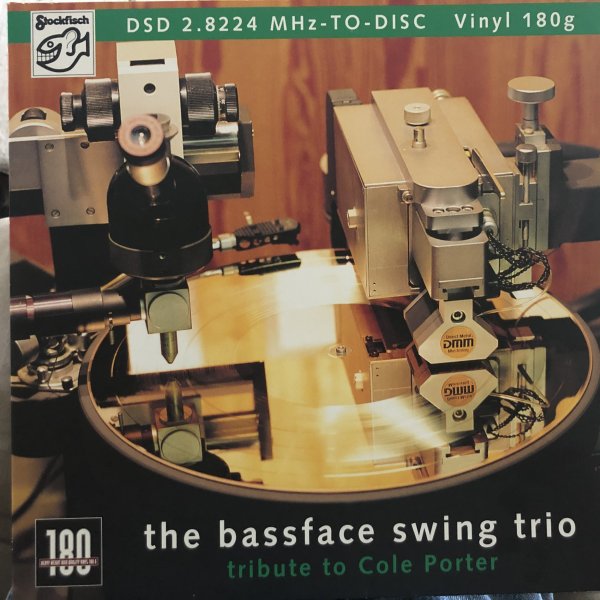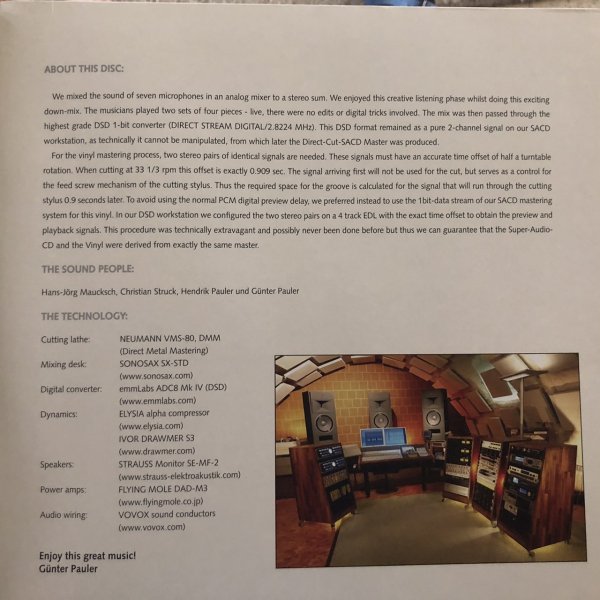Paul McGowan of PS Audio embarked some time ago upon the incredibly impressive project of making new recordings of singers and musicians employing audiophile recording techniques and what Paul believes is the highest sound quality DSD digital recording process. I think any effort to record new music using audiophile techniques is an extremely laudable effort which should be applauded and supported!
In Paul's blog post today he wrote that the SACD of Paul's Octave Records' release, Temporary Circumstances, is already more than half sold. Congratulations to Paul and to Octave Records!
In Paul's post today he discussed that he is also releasing a limited edition LP:
Last week Paul wrote on his blog an essay titled "Audio Pedigree" in which he discussed his dismay at the confusion sometimes surrounding vinyl releases of digital masterings.
In response to Paul's post today announcing the vinyl release effort I wrote:
Paul kindly and comprehensively replied:
Do you think Paul is correct?
Do you agree with him that a DSD recording of a performance which is released on vinyl ultimately sounds better and more realistic (i.e., provides a greater suspension of disbelief) than an analog tape recording of that same performance which is released on vinyl?
Why does Paul believe that "DSD isn't 'digital' as PCM is"?
In Paul's blog post today he wrote that the SACD of Paul's Octave Records' release, Temporary Circumstances, is already more than half sold. Congratulations to Paul and to Octave Records!
In Paul's post today he discussed that he is also releasing a limited edition LP:
We do plan on releasing a limited run of virgin vinyl 45rpm pressings—probably 500 pieces—sometime next month if we’re able. Gus and our engineering team have struggled to get a clean cut from the DSD masters. Seems the extended bandwidth and the nature of DSD are upsetting the cutting lathes.
Last week Paul wrote on his blog an essay titled "Audio Pedigree" in which he discussed his dismay at the confusion sometimes surrounding vinyl releases of digital masterings.
In response to Paul's post today announcing the vinyl release effort I wrote:
Dear Paul,
Congratulations on your release! That is very exciting! I am impressed and delighted that you are making new recordings using audiophile recording techniques!
But in your recent “Audio Pedigree” post you wrote:
“If you’re hoping to purchase an analog recording, it’s not genuine if it was first recorded digitally. Which is why there’s often so much confusion around modern LPs or even remasters. I shake my head when I learn a particular vinyl released remaster was first digitally transferred from analog tape. That’s a mutt.”
Doesn’t cutting an LP from your digital recording create another type of “mutt”? What is your sonic playback objective of a vinyl release of your digital recording?
Does this suggest you are going to resuscitate your vinyl front-end at PS Audio?
Thank you.
Best wishes,
Ron
Paul kindly and comprehensively replied:
It’s a great question and one I love. The perfect vinyl purebred is a direct to disc on the cutting lathe. The way Sheffield used to do it with live musicians playing while a cutting engineer made the vinyl master. That’s an art beyond what we can do, especially since we do not even own a cutting lathe.
The next best purebred which, is typical, would be to have recorded the tracks on an analog tape machine and then transferred over to vinyl. That’s pure analog. But, here’s the thing. It’s not as good as DSD to vinyl. DSD isn’t “digital” as PCM is. It’s as close to analog as you can get and sounds better than tape.
So yes, it’s a “mutt” but a mutt that’s better sounding than the purebred in my second example.
---------------------------------------------------------------------Do you think Paul is correct?
Do you agree with him that a DSD recording of a performance which is released on vinyl ultimately sounds better and more realistic (i.e., provides a greater suspension of disbelief) than an analog tape recording of that same performance which is released on vinyl?
Why does Paul believe that "DSD isn't 'digital' as PCM is"?
Last edited:



